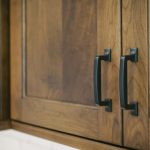A desiccator is a cabinet which is sealed completely from all the sides. It is used to store those chemicals or products which absorb water, i.e. hygroscopic products. Those items which need to be kept moisture free are stored in it. One can keep an already dry substance or those which needs to be dried.
It is not advisable to store those items which will immediately absorb moisture because whenever a desiccator cabinet is opened a little moisture from the air seeps in, so those which immediately absorb moisture might react violently. Other than few chemicals or alkali metals other things which needs moisture free environment can be easily stored in it. Highly volatile items like alkali which react to water in air should be avoided at all costs. The reason here is being that a desiccator cabinet is due to open n number of times. Any time it is opened, some air may enter the cabinet making it dangerous as the alkali will probably react within seconds!
How the cabinet works?
In order to absorb any water that is there in the cabinet or the sample kept in it, these desiccators have lumps of silica gel, freshly calcined quicklime, and anhydrous calcium chloride. These are known as desiccants. To place the sample in the desiccator cabinet, it should have a glazed, perforated ceramic plate. The rim should be air tight and some petroleum jelly could be used for that. One can use colour changing silica gel which turns to another colour as and how moisture is absorbed. This colour changing silica gel ensures that the sample in the desiccator cabinet has no way of absorbing moisture. Since we know how much more moisture can be absorbed, the sample is placed accordingly.
It is also known to use stopcock in certain types of desiccators. These are vacuum desiccators. When required, the desiccator is appropriately covered and the stopcock is turned on to release any air that may have been trapped inside. To maintain a good seal, vacuum grease is usually applied on the flanges.
What are desiccators made up of?
Desiccators are usually made up of heavy glass and come in different shapes and sizes, but there are desiccators made up of plastic, or stainless steel. Fully vacuum desiccators are also available. As per the requirement you can select a vacuum or a non-vacuum desiccator.
In order to open or close a desiccator one must slide it first and then pull it up to open or push it a little down to close or else the air tight sealing will malfunction. If need be, apply petroleum jelly or Vaseline on the sealed rim to make it air tight.
You even need to keep a check on the desiccants, if they appear wet or clumps are beings formed, change it immediately. Be cautious while handling desiccants. Do not let them stick on the sides or plate of the desiccator.
The process of removing or putting reagent should be as less as possible to avoid moisture absorption or keep it to bare minimum.








